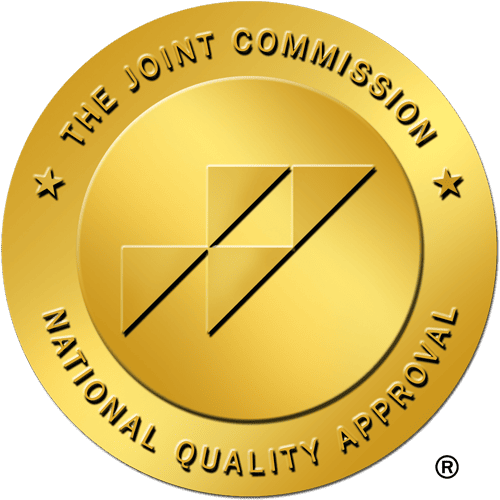Identifying Hoarding Behavior
Hoarding behavior is characterized by an excessive accumulation of items, often resulting in cluttered living spaces that impede normal daily activities. Individuals who hoard typically struggle to discard possessions, regardless of their actual value or usefulness. This behavior can significantly impact an individual’s quality of life, as well as the well-being of those around them.
Common signs of hoarding behavior include difficulty organizing possessions, a perceived need to save items that others may view as worthless, and feeling distress or anxiety when faced with the idea of discarding belongings. Hoarders often have a strong emotional attachment to their belongings and may have difficulty parting with items due to sentimental reasons or a fear of needing them in the future. Recognizing these signs and understanding the underlying factors contributing to hoarding behavior is crucial in providing effective intervention and support.
Understanding the Impact on Mental Health
Hoarding behavior can have profound effects on an individual’s
mental health. The accumulation of possessions beyond necessary or feasible amounts can lead to increased anxiety, feelings of overwhelm, and a sense of loss of control. Those who hoard often struggle with decision-making, attachment to objects, and difficulty in organizing their living spaces, which can further exacerbate their stress and contribute to a decline in overall well-being.
Furthermore, individuals affected by hoarding may experience social isolation, shame, and embarrassment due to their living conditions. This can lead to decreased self-esteem and a reluctance to seek help or invite others into their homes. The mental health impacts of hoarding can be debilitating and have a significant impact on one’s quality of life, making it crucial to address these issues with compassion and understanding.
Recognizing the Need for Professional Help
Individuals struggling with hoarding behavior may find it challenging to acknowledge the need for professional help. However, seeking assistance from mental health professionals is crucial in addressing the underlying causes of hoarding and developing effective strategies for managing the condition. Therapists specializing in hoarding disorder understand the complexities involved and can provide personalized treatment plans tailored to the individual’s specific needs.
Professional help offers a structured approach to addressing hoarding behavior, allowing individuals to work through their challenges in a supportive and non-judgmental environment. Through therapy sessions, individuals can gain insight into their hoarding tendencies, learn coping mechanisms, and acquire skills to make lasting behavioral changes. A mental health professional can also assist in identifying any co-occurring mental health issues that may be exacerbating hoarding behavior and provide appropriate interventions to address these concerns effectively.
Exploring Therapy Options
When exploring therapy options for individuals struggling with hoarding behavior, it is crucial to consider the various approaches available to address the underlying psychological factors contributing to this condition. Cognitive Behavioral Therapy (CBT) has shown promising results in helping individuals modify their thoughts and behaviors related to hoarding. Through CBT, individuals can learn to challenge distorted beliefs about possessions and develop healthier coping mechanisms to reduce the urge to hoard. Additionally, Exposure Response Prevention (ERP) therapy can be beneficial in gradually exposing individuals to anxiety-provoking situations related to discarding items, helping them confront their fears in a controlled manner.
Another therapy option worth exploring is Acceptance and Commitment Therapy (ACT), which focuses on helping individuals accept their thoughts and feelings without judgment while committing to making meaningful behavioral changes aligned with their values. ACT can empower individuals to develop a more flexible relationship with their possessions and facilitate their journey towards decluttering and organizing their living spaces. By considering these therapy options, individuals with hoarding behavior can receive the necessary support and guidance to address their underlying emotional challenges and work towards improving their overall well-being.
Implementing Cognitive Behavioral Techniques
Cognitive behavioral techniques play a vital role in addressing hoarding behavior by targeting the underlying thoughts and beliefs that drive this compulsive behavior. By identifying and challenging distorted thinking patterns associated with hoarding, individuals can gain a better understanding of their motivations and triggers. This type of therapy focuses on restructuring these cognitive patterns and developing more adaptive ways of thinking and behaving.
Through cognitive-behavioral techniques, individuals can learn to replace maladaptive behaviors with healthier coping strategies. This may involve practicing decision-making skills, learning to prioritize possessions, and gradually exposing oneself to discarding items. By systematically addressing these cognitive and behavioral aspects of hoarding, individuals can make significant progress in overcoming this challenging disorder.
Creating a Support System for Hoarding Behavior
When tackling hoarding behavior, it’s crucial to establish a robust support system. This network of individuals should be composed of understanding and non-judgmental people who can offer encouragement and assistance throughout the decluttering process. This support system can include family members, friends, therapists, organizers, or support groups specializing in hoarding disorder.
Having a dependable support system is essential for maintaining motivation and accountability. These individuals can provide emotional support during challenging times, offer practical help with sorting and organizing possessions, and serve as a source of guidance and encouragement. By surrounding oneself with a supportive network, those struggling with hoarding behavior are more likely to stay on track, make progress, and ultimately achieve a clutter-free and mentally healthier living environment.
Establishing a Structured Cleaning Plan for Hoarding Behavior
When establishing a structured cleaning plan for individuals struggling with hoarding behavior, it is crucial to approach the process with sensitivity and understanding. Clear communication and empathy are paramount in guiding individuals towards organizing and decluttering their living spaces effectively. Begin by conducting a thorough assessment of the cluttered areas, prioritizing the spaces that are causing the most distress or pose potential safety hazards.
Next, work collaboratively with the individual to develop a step-by-step plan for decluttering and cleaning. Break down the tasks into manageable segments to prevent overwhelming feelings and promote a sense of accomplishment. Encourage the individual to make decisions about what items to keep, donate, or discard while providing them with support and guidance throughout the process. By creating a structured cleaning plan tailored to the individual’s needs and capabilities, progress can be made towards creating a safer and more functional living environment.
• Conduct a thorough assessment of cluttered areas
• Prioritize spaces causing distress or safety hazards
• Develop a step-by-step plan for decluttering and cleaning
• Break down tasks into manageable segments
• Encourage decision-making on items to keep, donate, or discard
Developing Coping Strategies for Hoarding Behavior
Developing coping strategies is a crucial component in managing hoarding behavior and promoting mental well-being. Individuals struggling with hoarding tendencies often face overwhelming feelings of anxiety, guilt, and shame. To effectively cope with these emotions, it is essential to identify healthy coping mechanisms that can help regulate emotions and reduce distress. One strategy is to engage in mindfulness practices, such as meditation or deep breathing exercises, to cultivate a sense of calm and presence in the moment. Additionally, practicing self-care activities like exercise, hobbies, or spending time with loved ones can provide a much-needed break from the stress of hoarding behaviors.
Furthermore, cognitive reframing is a beneficial coping strategy that can help individuals challenge and change negative thought patterns associated with hoarding. By actively reframing thoughts from a more rational and positive perspective, individuals can begin to shift their mindset and develop a healthier relationship with their possessions. Seeking support from a therapist or support group can also aid in developing effective coping strategies, as they can provide guidance, encouragement, and a safe space to explore and address underlying emotional issues contributing to hoarding behavior.
Maintaining Progress and Preventing Relapse
To maintain progress and prevent relapse in hoarding behavior, continuous effort and commitment are necessary. Regular check-ins with a mental health professional can help individuals stay on track and address any challenges that may arise. It is important to consistently implement the strategies learned in therapy and practice cognitive behavioral techniques to change thought patterns and behaviors associated with hoarding.
In addition to individual therapy, having a strong support system in place is crucial for long-term success. Surrounding oneself with understanding and encouraging individuals can provide motivation and accountability. Collaborating with loved ones and professionals to develop a structured cleaning plan and coping strategies tailored to the individual’s needs can further support progress and help prevent relapse.
Promoting Long-Term Mental Wellness
As individuals progress in their recovery journey from hoarding behavior, promoting long-term mental wellness becomes a key focus. It is crucial to continue to engage in healthy habits and behaviors that have been identified as beneficial throughout the healing process. This may include regular sessions with a therapist or support group, maintaining a structured cleaning plan, and utilizing coping strategies to manage stressors effectively.
Furthermore, fostering a strong support system can significantly contribute to long-term mental wellness. Surrounding oneself with understanding and encouraging individuals who can offer guidance and motivation is essential in sustaining progress and preventing relapse. By proactively seeking assistance when needed and actively participating in therapy options, individuals can continue to cultivate a positive mental state and ultimately achieve long-term mental wellness in their recovery from hoarding behavior.




